
Friedrich Rudolf Klein, better known as Rudolf Klein-Rogge, was a German film actor, best known for playing sinister figures in films in the 1920s and 1930s as well as being a mainstay in director Fritz Lang's Weimar-era films. He is probably best known in popular culture, particularly to English-speaking audiences, for playing the archetypal mad scientist role of C. A. Rotwang in Lang's Metropolis and as the criminal genius Doctor Mabuse. Klein-Rogge also appeared in several important French films in the late 1920s and early 1930s.

Heinrich Piel, known professionally as Harry Piel, was a prolific German actor, film director, screenwriter, and film producer who was involved in over 150 films.
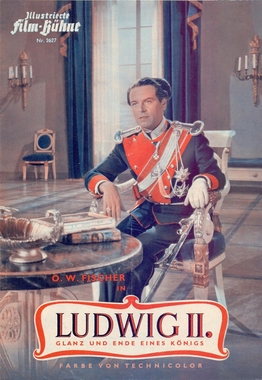
Ludwig II is a 1955 West German historical drama film directed by Helmut Käutner and starring O.W. Fischer, Ruth Leuwerik and Marianne Koch. It is based on the life of the nineteenth century ruler Ludwig II of Bavaria. It was entered into the 1955 Cannes Film Festival. The film was shot in technicolor at the Bavaria Studios in Munich with sets designed by the art director Hein Heckroth and Fritz Lück. Location shooting took place at the historic residences of Ludwig II Herrenchiemsee, Neuschwanstein Castle and Hohenschwangau Castle.
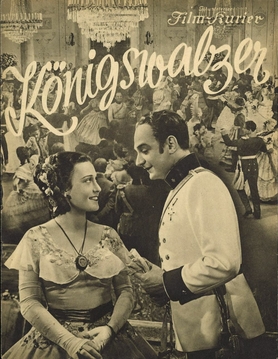
The Royal Waltz is a 1935 German musical film directed by Herbert Maisch and starring Paul Hörbiger, Curd Jürgens, and Carola Höhn. It was shot at the Babelsberg Studios of UFA in Berlin. The film's sets were designed by the art directors Robert Herlth and Walter Röhrig. A separate French-language version Royal Waltz was also released. It was remade in 1955 under the same title.

Elisabeth Wendt was a German film actress. After making her debut in Georg Wilhelm Pabst's Comradeship (1931), she appeared mostly in supporting roles during the Nazi era and immediate post-Second World War years.
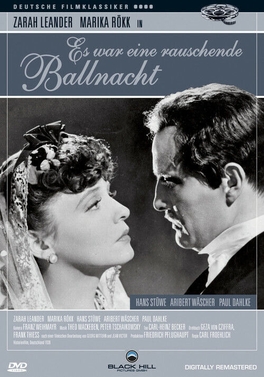
The Life and Loves of Tschaikovsky or It Was a Lovely Night at the Ball is a 1939 German historical drama film directed by Carl Froelich and starring Zarah Leander, Aribert Wäscher and Hans Stüwe. It premiered on 13 August 1939 at the Venice Film Festival.

Maria Ilona is a 1939 German historical drama film directed by Géza von Bolváry and starring Paula Wessely, Willy Birgel, and Paul Hörbiger. The film is set in Austria during the reign of Ferdinand I. It is an adaptation of Oswald Richter-Tersik's novel Ilona Beck.

Goodbye, Franziska is a 1941 German romance film directed by Helmut Käutner and starring Marianne Hoppe, Hans Söhnker and Fritz Odemar. It portrays the relationship between a globetrotting reporter and his devoted wife. The film was remade in 1957.
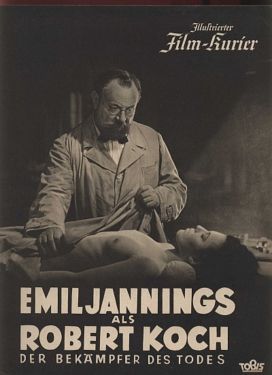
Robert Koch is a 1939 Nazi propaganda film directed by Hans Steinhoff and starring Emil Jannings, Werner Krauss and Viktoria von Ballasko. The film was a biopic of the German pioneering microbiologist Robert Koch (1843–1910). It was shot at the Johannisthal Studios in Berlin and premiered at the city's Ufa-Palast am Zoo. The film was made by the Tobis Film company, and was also distributed in the United States by UFA.

By a Silken Thread is a 1938 German drama film directed by Robert A. Stemmle and starring Willy Fritsch, Carl Kuhlmann and Käthe von Nagy. The film was intended to be an exposure of "crooked Jewish capitalists" in line with Nazi racial policy of the era. It was shot at the Babelsberg Studios of UFA in Potsdam. The film's sets were designed by the art director Otto Hunte.

Back Then is a 1943 German drama film directed by Rolf Hansen and starring Zarah Leander, Hans Stüwe, and Rossano Brazzi. The film's sets were designed by Walter Haag. It was made at the Babelsberg Studio, by Universum Film AG, Germany's largest film company. It was Leander's final film of the Nazi era, as she returned to Sweden shortly afterwards. This was a blow for the German film industry, as she was the most popular and highest-paid star. Leander's next film was not for another seven years, when she made a comeback in Gabriela (1950).

When Women Keep Silent is a 1937 German comedy film directed by Fritz Kirchhoff and starring Johannes Heesters, Hansi Knoteck and Friedrich Kramer. A newly married couple become involved in a series of marital differences, largely due to misunderstandings.

Men Are That Way is a 1939 German drama film directed by Arthur Maria Rabenalt and starring Hertha Feiler, Hans Söhnker and Hans Olden. The film's sets were designed by the art director Willi Herrmann. It was remade by Rabenalt in Austria as Arena of Fear (1959).

Dangerous Game is a 1937 German comedy film directed by Erich Engel and starring Jenny Jugo, Harry Liedtke and Karl Martell.

Counterfeiters is a 1940 German crime film directed by Hermann Pfeiffer and starring Kirsten Heiberg, Rudolf Fernau and Karin Himboldt.

The Governor is a 1939 German drama film directed by Viktor Tourjansky and starring Brigitte Horney, Willy Birgel and Hannelore Schroth. It is based on the play Die Fahne by Emmerich Groh. It was shot at the Babelsberg and Tempelhof Studios in Berlin and on location in East Prussia. The film's sets were designed by the art director Max Mellin. It was produced on a budget of 715,000 Reichsmarks.

The Dream of Butterfly is a 1939 musical drama film directed by Carmine Gallone and starring Maria Cebotari, Fosco Giachetti and Germana Paolieri. It is an variation of the plot of the opera Madame Butterfly. A co-production between Italy and Germany, two separate versions were produced in the respective languages. It is also alternatively titled Madame Butterfly. It was one of several opera-related films directed by Gallone, following on from Casta Diva (1935) and Giuseppe Verdi (1938).
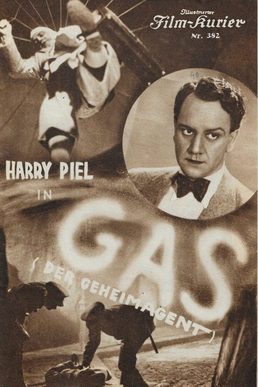
Secret Agent is a 1932 German thriller film directed by and starring Harry Piel and also featuring Maria Matray, Eduard von Winterstein and Leonard Steckel. It was shot at the Staaken and Grunewald Studios in Berlin. The film's sets were designed by the art director Gustav A. Knauer. It was distributed by the German branch of Universal Pictures.

The Call of the Jungle is a 1936 German adventure film directed by and starring Harry Piel and also featuring Paul Henckels, Ursula Grabley and Gerda Maurus. It was shot at the Johannisthal Studios in Berlin with sets designed by the art directors Karl Vollbrecht, Erich Grave and Artur Günther. Location shooting took place on Rügen in the Baltic Sea. It was based on a 1930 novel by Georg Mühlen-Schulte and features a hero in the style of Tarzan. The film premiered at the UFA-Palast am Zoo.

Ninety Minute Stopover is a 1936 German adventure crime film directed by and starring Harry Piel. It also features Alexander Golling, Else von Möllendorff and Genia Nikolaieva. It was shot at the Grunewald Studios of Tobis Film in Berlin and On location in Lisbon. The film's sets were designed by the art directors Wilhelm Depenau and Karl Vollbrecht.




















